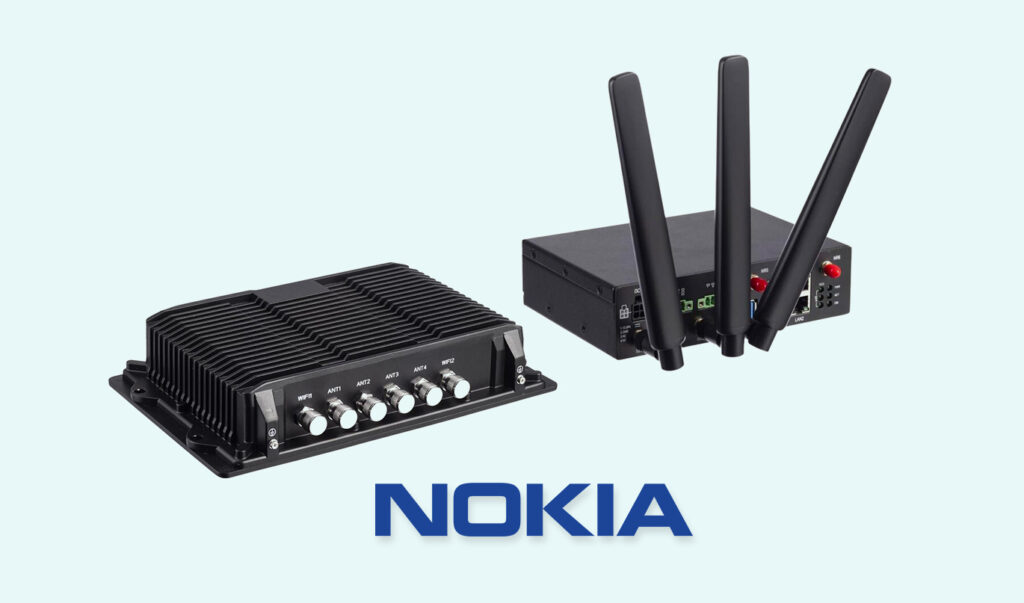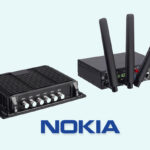ASIA ELECTRONICS INDUSTRYYOUR WINDOW TO SMART MANUFACTURING
Nokia Enhances Industrial Range to Suit Rugged Needs
Nokia Corporation has enhanced its market-leading range of ruggedized user equipment for use in hazardous, flammable, explosive and dusty environments. Particularly, the company is introducing enhanced versions of Nokia Industrial 5G fieldrouter and Nokia XR20 smartphone created by HMD Global, for 4.9G and 5G networks. Hence, this will allow manufacturers of various industries to maintain vital connectivity of their workforce and machines.
The digital transformation of industries is driven not just by the need to boost productivity and efficiency, but also to protect teams and the environment. For instance, it’s essential to keep workers connected at a remote oil drilling platform, chemical processing plant, dusty mine, or any other hazardous environments. *ATEX, *IECEx, *NEC500 and *UL detail the requirements for making equipment safe to use in those locations. Particularly, on locations where flammable chemicals are present and the danger of explosions could occur.

Benefits From Industry 4.0
The ruggedized Nokia XR20 has been enhanced in collaboration with HMD Global to meet the requirements of operating in hazardous environments. With applications such as Nokia Team Comms or Group Communications on the smartphones, workers can interact using push-to-talk and video. Nokia Industrial 5G fieldrouters and Nokia XR20 Industrial edition phones come certified by ATEX and IECEx. Meanwhile, NEC500 and UL have also certified the Nokia XR20 Industrial edition to meet the protection requirements of countries.
Nokia pioneering Industrial 5G fieldrouters solve the issue of connecting legacy industrial equipment and vehicles to the private wireless networks. This allows to allow enterprises to benefit from Industry 4.0 use cases such as autonomous operations at mines, ports, and factories. Now equipped with integrated enclosures, oil and gas companies can use the Industrial fieldrouters to connect autonomous vehicles in hazardous areas. At the same time, collect environmental and other types of data from machines connected by fieldrouters over the private wireless network.
Jaime Laguna, Global Head of Oil and Gas and Mining for Nokia, said, Nokia commits to deliver end-to-end private wireless solutions for enterprises. In addition, Laguna said this will allow workers to communicate in the most intuitive, secure and safe ways, especially in demanding hazardous environments.
Meanwhile, Sebastian Ulrich, Managing Director Global Enterprise Business for HMD Global, said, “We are looking forward to working closely with Nokia to provide end to end solutions in demanding hazardous environments. The Nokia XR20 Industrial edition allows vital and secure communication for workers in these remote locations.”
Ecosystem of Nokia Solutions
By implementing the Nokia Digital Automated Cloud (DAC) private wireless platform, customers can leverage the recently launched Nokia Connectivity Operations Dashboard. This extends the Nokia Industrial device management. In addition, this will provide the tools they require to track and gain visibility into device and network health without the need to deploy a separate solution.
Nokia Industrial device management supports zero-touch onboarding of Nokia Industrial smartphones, handhelds, and IoT devices on the network. Moreover, management can scale to thousands of devices, allowing customers to apply policies and permissions by groups and update and patch devices remotely. Furthermore, by subscribing to Nokia Network Digital Twin in addition to Nokia Connectivity Operations Dashboard, customers will benefit from real-time monitoring of the network as experienced by the devices. Hence, providing capabilities such as anomaly detection and prediction of future behavior, allowing users to see the impact of planned changes ahead of real-world implementation.
Notes:
*ATEX (Appareils destinés à être utilisés en ATmosphères EXplosives)
*IECEx (IEC System for Certification to Standards Relating to Equipment for Use in Explosive Atmospheres)
*NEC500 (National Electrical Code® Articles 500)
*UL (Underwriters Laboratory)



